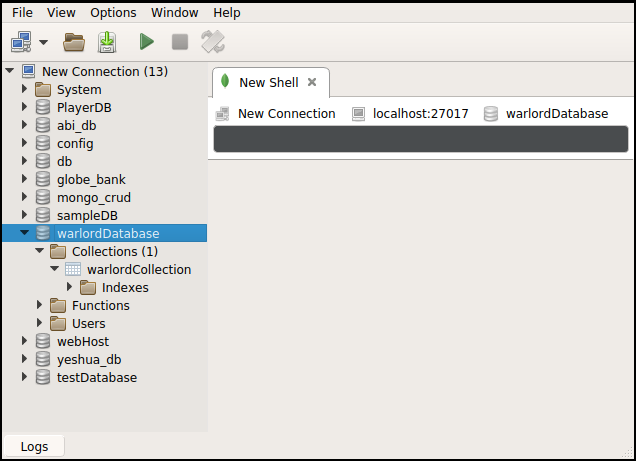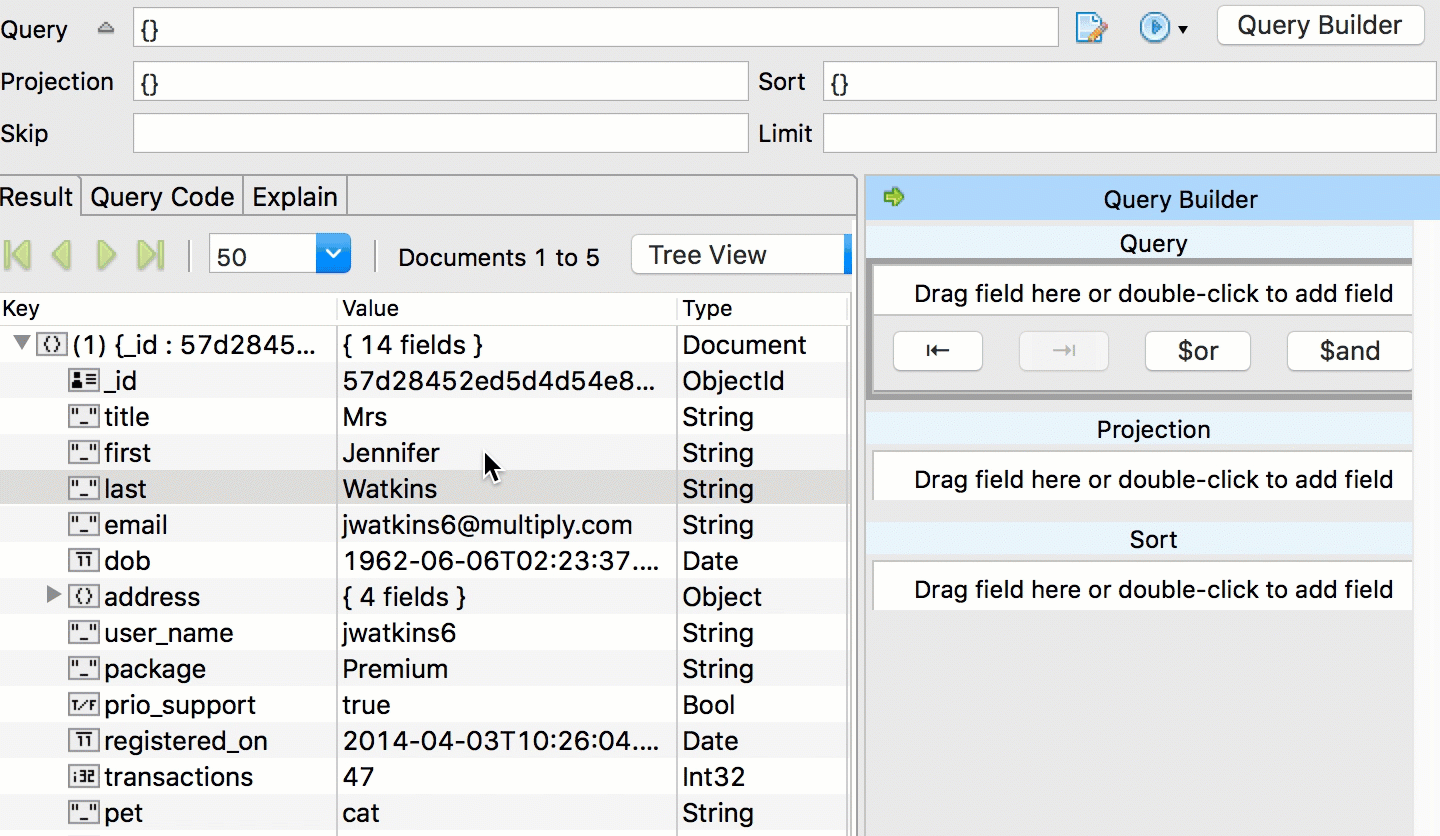
The dateToString is another MongoDB date operator to convert a date object to a string according to a user-specified format. #If a time part is included, an offset from UTC can also be included as +-HH:mm, +-HHmm, +-HH or Z. 09:30:26 # An hour, minute, and second time part #A time part can also be included, separated from the date part by a space or an uppercase T.
#ROBO 3T QUERY ISO#
# An ISO 8601 string requires a date part. Please refer to Moment.js parse string document to view all supported string formats.

When creating a date from a string, Moment.js first check if the string matches the known ISO 8601 formats, Moment.js then check if the string matches the RFC 2822 Date time format before dropping to the fall back of new Date(string) if a known format is not found. NoSQLBooster for MongoDB uses Moment.js to parse date string. The date function converts a string to a MongoDB Date type.
#ROBO 3T QUERY CODE#
Better yet, all SQL Functions provide the appropriate code snippets and mouse hover information and support code completion.įor example, the employees' collection has the following fields including number, first_name, last_name, salary, department, and hire_date.
#ROBO 3T QUERY HOW TO#
With this tutorial, you can learn and understand how to use NoSQLBooster SQL Query for MongoDB. It should be mentioned that there is a tutorial on NoSQLBooster SQL Query for MongoDB in the lower left “Samples” pane. The Equivalent MongoDB Query can be viewed in the console.log tab. The SQL query is validated and translated into a MongoDB query and executed by NoSQLBooster for MongoDB. Please note that MongoDB does not natively support SQL features.



 0 kommentar(er)
0 kommentar(er)
